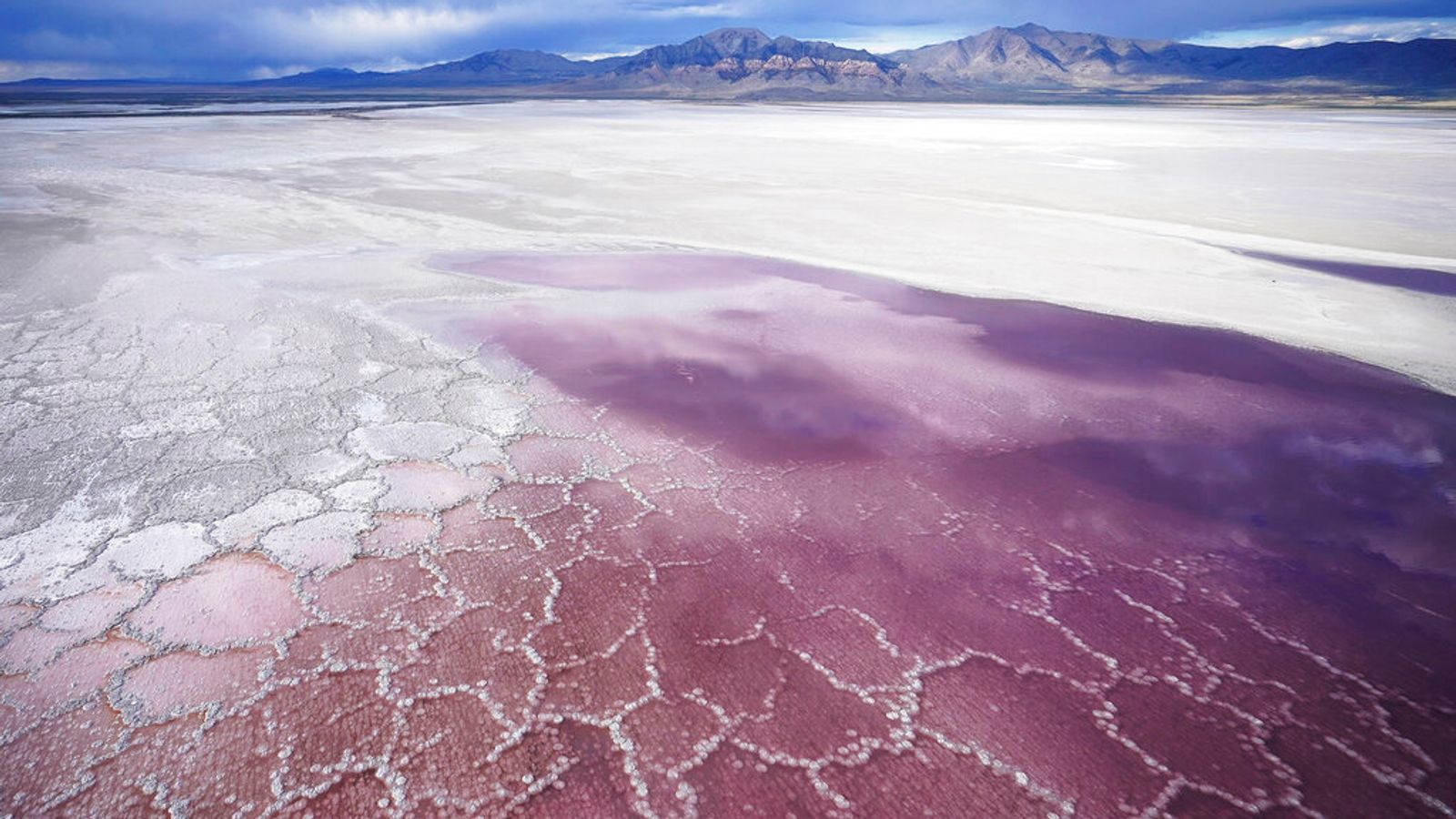The water levels at the Great Salt Lake, in the northern part of the US state of Utah, have hit historic lows as a drought grips the region.
Average daily water levels fell around an inch below the previous record of 4,191.4ft (1,278m) – set in 1963.
Candice Hasenyager, deputy director of Utah’s Division of Water Resources, said the new record comes months earlier than when the lake typically hits its lowest level of the year.
This indicates that water levels could continue to drop even more.
The Great Salt Lake is the largest saltwater lake in the western hemisphere, and in an average year it covers around 1,700 square miles (4,400km) – but this fluctuates due to the lake’s shallowness.
Although it has been called America’s Dead Sea, the lake is home to millions of native birds, brine shrimp, shorebirds and waterfowl – and receding waters are already affecting a nesting spot for pelicans.
Some boats have also been hoisted out of the water to keep them from getting stuck in the mud.
The exposure of dry lakebeds could send arsenic-laced dust into the air that millions of people breathe.
For years, people have been diverting water from rivers that flow into the lake to water crops and supply homes.
Since the lake is shallow – about 35ft (11m) at its deepest point – less water has quickly lead to receding shorelines.
Please use Chrome browser for a more accessible video player
The Great Salt Lake typically gains up to 2ft (0.5m) a year from spring runoff, but this year it was just six inches (15cm).
The drought is having a wider environmental impact – drying up lakes across the west of the US and worsening massive wildfires in California and Oregon.
Blistering temperatures in recent weeks, which have topped 50C (122F) in the desert resort city of Palm Springs, California, have also put the country’s fragile power grid under intense pressure as people crank up air conditioning in a bid to counter the scorching heat.
Republican Utah Governor Spencer Cox has begged people to cut back on lawn watering and “pray for rain”.
In related news, a sandstorm over the weekend caused a huge 22-vehicle pile-up on a Utah road that left eight people dead, including children.
The tragic accident on Sunday afternoon near the town of Kanosh came at the end of a holiday weekend for the state that often leads to increased traffic, and occurred during a period of high winds that caused a dust or sandstorm which reduced visibility, Utah Highway Patrol said.
At least 10 people were taken to hospitals and three are in critical condition.
Meanwhile, hundreds of thousands of baby salmon are dying in Northern California’s Klamath River as drought-induced low water levels allow a parasite to thrive, devastating a Native American tribe whose diet and traditions are tied to the fish.
And wildlife officials have said the Sacramento River, the largest river in California, is facing a “near-complete loss” of young Chinook salmon due to abnormally warm water.
Please use Chrome browser for a more accessible video player
Such extreme conditions are usually from a combination of unusual, short-term and natural weather patterns heightened by long-term, human-caused climate change.
Scientists have long warned that the weather will get more extreme as the earth continues to warm, and climate change has made the West much warmer and drier over the past 30 years.






















